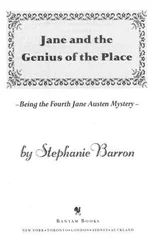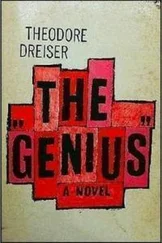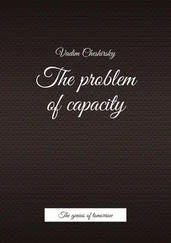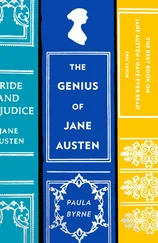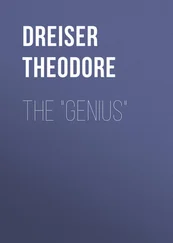Unknown - The Genius
Здесь есть возможность читать онлайн «Unknown - The Genius» весь текст электронной книги совершенно бесплатно (целиком полную версию без сокращений). В некоторых случаях можно слушать аудио, скачать через торрент в формате fb2 и присутствует краткое содержание. Жанр: Старинная литература, на английском языке. Описание произведения, (предисловие) а так же отзывы посетителей доступны на портале библиотеки ЛибКат.
- Название:The Genius
- Автор:
- Жанр:
- Год:неизвестен
- ISBN:нет данных
- Рейтинг книги:4 / 5. Голосов: 1
-
Избранное:Добавить в избранное
- Отзывы:
-
Ваша оценка:
- 80
- 1
- 2
- 3
- 4
- 5
The Genius: краткое содержание, описание и аннотация
Предлагаем к чтению аннотацию, описание, краткое содержание или предисловие (зависит от того, что написал сам автор книги «The Genius»). Если вы не нашли необходимую информацию о книге — напишите в комментариях, мы постараемся отыскать её.
The Genius — читать онлайн бесплатно полную книгу (весь текст) целиком
Ниже представлен текст книги, разбитый по страницам. Система сохранения места последней прочитанной страницы, позволяет с удобством читать онлайн бесплатно книгу «The Genius», без необходимости каждый раз заново искать на чём Вы остановились. Поставьте закладку, и сможете в любой момент перейти на страницу, на которой закончили чтение.
Интервал:
Закладка:
I wondered how he intended to acquire The Persistence of Memory, not to mention Les Demoiselles D’Avignon, The Nightwatch, and the Mona Lisa.
“She recommended an excellent copyist.” He then named an Argentinean, living in Toronto, best known for having been arrestedbut never convictedfor forging Rembrandts.
I considered the decision to line up all those competing pictures questionable at best. But Hollister seemed honestly thrilled by the idea. Describing himself as a “heavily quantitative thinker,” he raved to me about Marilyn’s ability to cut through the jargon and give a clear picture of what art mattered and what did not. She had given him some sort of numerical guideline for assessing a piece’s worth, and it was with this scale that he had decided to make me an offer on the Cracke drawing.
“To be frank,” he said, “I would have gone as high as four-fifty.” He touched the desk again, causing the panels to slowly rotate back to their original positions.
Except for onethe future resting place of The Burial of Count Orgaz, which got stuck after about a quarter turn. Hollister banged at it, found it intractable, and, reddening, touched the desk to summon Matthew. The butler appeared post-haste and, seeing the catastrophe, hurried from the room, cell phone in hand. As Hollister and I stepped from the office and made our way back toward the elevator, I heard a California accent rising to the top of its lungs.
HOLLISTER’S PRIVATE MUSEUM stood at the highest point on his estate. A glass dome, dimpled and latticed with iron pipes, the structure resembled nothing so much as a gigantic, half-buried golf ball. I could only imagine the cost involved: the foundation work alone probably ran toward eight figures, once you took into account that the top of the hill had to be chopped off. Add to that an architect so prominent that Hollister declined to name him (“It was a favor. He doesn’t want it getting around that he does residential work”) and bulletproof glass for the entire exterior and you began to approach a new universe of money.
The armored car was parked by the loading dock, the jumpsuited men waiting for us. Like the butler, they addressed Hollister by his first name.
A retinal scan later, we stepped inside the dome, and I looked up at a series of concentric balconies culminating in an enormous Calder mobile seven stories overheard. Whoever the architect was, he had ripped off the New York Guggenheim to the extent that I wondered if that had been Hollister’s express wish. He wanted copies of the world’s most desirable paintings; why not replicate the most famous buildings, too? The glass I saw as a nod to I. M. Pei, and I felt certain that if I looked hard enough I would find other references as well.
A tweedy, greenish man in a well-cut suit met us in the lobby. Hollister introduced him as Brian Offenbach, the museum’s manager, who I gathered was basically a glorified picture hanger. In the cadences of a well-rehearsed speech, Offenbach explained the logic behind the museum’s layout; the work was displayed not chronologically or thematically but tonally, with the darkest pieces on the ground floor, and every successive floor getting lighter. Light and dark could mean the color of the piece, but more often it meant the emotional response the piece provoked, or the sense of weightiness it gave. Hence the Calder, despite its immensityfive tons of painted steeloccupied the apex, for the feelings of flight it evoked. Hollister had designed the scheme himself, and was proud of it; as one went higher, one transcended the physical realm and found oneself elevated to an understanding of blah blah blah blah blah.
I distrust binary systemslight and dark, good and evil, male and femaleand the arrangement seemed to me self-defeating: an attempt to whittle down art’s ragged irrationality that ultimately created not order but muddle.
“It’s wonderful,” I said.
They had already begun bringing the new art up to the third floor, and when we stepped out of the elevator we confronted a tornado of packing material and exploded crates. Hollister had to keep raising his voice above the whine of drills.
“I’ve been wondering if the Cracke PIECE BELONGS HERE WITH THE REST OF THE, of the collection. I mean, it’s so disturb DISTURBING, AND I WONDER IF I’D BE BETTER OFF PUTTING IT in a separate wing. For outsider art. I could tack on another few rooms. NEAR THE BACK. THAT WOULD HAVE SYMBOLIC RESONANCE, WOULDN’T IT, PUTTING the outsider art segregated in its own sphere. WHAT DO YOU THINK?”
I nodded.
“On second thought. The THE WHOLE POINT OF COLLECTING OUTSIDER ART AS I UNDERSTAND ITMARILYN HAS BEEN GIVING ME SOME GREAT, great books to read. Have you read”and he named a bunch of obscure monographs. The only name I recognized was Roger Cardinal, the British critic who gave Dubuffet’s term Art Brut its English equivalent.
“The whole point is to REASSESS THE TRADITIONAL STANDARDS OF WESTERN CULTURE, AND to bring to light the talent of people untempered by SOCIETY. RIGHT?”
The Cracke drawing had special value to Hollister, as the first piece he had purchased of his own volition rather than Marilyn’s; he took a personal stake in its location. Offenbach offered suggestions, each one dismissed: “It’ll get lost.” “It’ll stand out.” “Too sterile.” “Not well framed.” It was as though this one piece had revealed all of the scheme’s flaws.
As a last resort we moved back to the lobby, It was my idea to have the workers hold the canvas up immediately to the left of the entrance. That would make the Cherubs the first thing you encountered.
“Perfect,” said Hollister.
Perfect meant another thirty minutes of discussion about height and centering and lighting. It couldn’t be too perfectly square; that wasn’t in keeping with the piece’s Otherness. But if you cheated to the left, you had an unpleasant gap; to the right and the edge of the drawing began to jut around the corner …
When they were done we all stood back to admire our handiwork.
“What is that?” Offenbach asked. He approached the canvas. “It’s like a star.
“I believe it is a star,” I said.
“Hm,” he said. “Is that a reference?”
“What do you think?”
“I think,” Offenbach began, and then said, “I think it looks marvelous. And that’s what’s important.”
THE RISE OF THE ART FAIR over the last three decades has drastically changed the contemporary market. A lot of business now takes place over a few frenetic weeks: the Armory Show in New York, the sprawling campuses of Tefaf Maastricht and Art Basel. I made a third of my sales at fairs; less trafficked galleries can do as much as fifty or sixty percent of their yearly totals.
For collectors, fairs provide motivation. If you had to traipse to every last gallery in Chelsea, who could blame you for tiring out and giving up within an hour or two? But when every dealer has his best twenty pieces out, hundreds of them lined up under one neat, climate-controlled tentand when you can stop at the espresso counter for muffins or duck confitthen you really have no excuse not to get out and see the damned art.
The Miami fair to which I boarded a plane that Tuesday afternoon was an offshoot of a European fair, and over the last few years, as prices went through the roof, it had undergone an incredible transformation, from a regional outpost to a circus entirely its own: red carpets and stretch Hummers; blinged-out hip-hop moguls in floor-length ermine; crusty Brits and unctuous Swedes and Japanese in Day-Glo eyeglasses; fashionistas, heiresses, events and parties and after-parties, hobnobbing and flashbulbing and the electric crackle of a lot of people about to have sex. Hair got dressed.
Читать дальшеИнтервал:
Закладка:
Похожие книги на «The Genius»
Представляем Вашему вниманию похожие книги на «The Genius» списком для выбора. Мы отобрали схожую по названию и смыслу литературу в надежде предоставить читателям больше вариантов отыскать новые, интересные, ещё непрочитанные произведения.
Обсуждение, отзывы о книге «The Genius» и просто собственные мнения читателей. Оставьте ваши комментарии, напишите, что Вы думаете о произведении, его смысле или главных героях. Укажите что конкретно понравилось, а что нет, и почему Вы так считаете.

